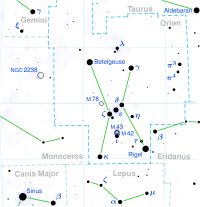
Dust in Supernovae and Supernova Remnants I: Formation Scenarios
Sign Up to like & getrecommendations! Published in 2018 at "Space Science Reviews"
DOI: 10.1007/s11214-018-0492-7
Abstract: Supernovae are considered as prime sources of dust in space. Observations of local supernovae over the past couple of decades have detected the presence of dust in supernova ejecta. The reddening of the high redshift… read more here.
Keywords: dust supernovae; supernova; supernova ejecta; dust ... See more keywords

Cosmic rays from supernova remnants and superbubbles
Sign Up to like & getrecommendations! Published in 2018 at "Advances in Space Research"
DOI: 10.1016/j.asr.2017.04.006
Abstract: Abstract Recent high energy gamma-ray observations of both single supernova remnants and superbubbles, together with observations of supernovae, star formation regions, and local cosmic ray composition, now provide an integrated framework tying together the sources,… read more here.
Keywords: supernova remnants; rays supernova; cosmic rays; remnants superbubbles ... See more keywords

44Ti ejecta in young supernova remnants
Sign Up to like & getrecommendations! Published in 2020 at "Astronomy and Astrophysics"
DOI: 10.1051/0004-6361/202037536
Abstract: Context: Tracing unstable isotopes produced in supernova nucleosynthesis provides a direct diagnostic of supernova explosion physics. Theoretical models predict an extensive variety of scenarios, which can be constrained through observations of the abundant isotopes $^{56}$Ni… read more here.
Keywords: young supernova; ejecta young; 44ti ejecta; kinematics ... See more keywords

Modeling simulation on amplifying magnetic fields in supernova remnants with an intense laser
Sign Up to like & getrecommendations! Published in 2023 at "New Journal of Physics"
DOI: 10.1088/1367-2630/acce95
Abstract: Local magnetic field enhancement in supernova remnants (SNRs) is a natural laboratory for studying the amplification effect of turbulent magnetic fields. In recent years, high-power laser devices have gradually matured as a tool for astronomical… read more here.
Keywords: supernova remnants; intense laser; magnetic field; field ... See more keywords

Multiwavelength analysis of Galactic Supernova Remnants
Sign Up to like & getrecommendations! Published in 2022 at "Journal of Cosmology and Astroparticle Physics"
DOI: 10.1088/1475-7516/2023/04/027
Abstract: The origin of Galactic Cosmic Rays (CRs) and the possibility of Supernova Remnants (SNRs) being potential CR accelerators is still an open debate. The charged CRs can be detected indirectly by the γ-ray observatories through… read more here.
Keywords: supernova; galactic supernova; analysis galactic; multiwavelength analysis ... See more keywords

The distance measurements of supernova remnants in the fourth Galactic quadrant
Sign Up to like & getrecommendations! Published in 2019 at "Research in Astronomy and Astrophysics"
DOI: 10.1088/1674-4527/19/7/92
Abstract: We take advantage of the red clump stars to build the relation of the optical extinction (AV) and distance in each direction of supernova remnants (SNRs) with known extinction in the fourth Galactic quadrant. The… read more here.
Keywords: distance measurements; distance; galactic quadrant; supernova remnants ... See more keywords

What causes the absence of pulsations in Central Compact Objects in supernova remnants?
Sign Up to like & getrecommendations! Published in 2021 at "Research in Astronomy and Astrophysics"
DOI: 10.1088/1674-4527/21/11/294
Abstract: Most young neutron stars belonging to the class of Central Compact Objects (CCOs) in supernova remnants do not have known periodicities. We investigated seven such CCOs to understand the common reasons for the absence of… read more here.
Keywords: supernova remnants; compact objects; geometry; central compact ... See more keywords

Wind nebulae and supernova remnants of very massive stars
Sign Up to like & getrecommendations! Published in 2020 at "Monthly Notices of the Royal Astronomical Society"
DOI: 10.1093/mnras/staa554
Abstract: A very small fraction of (runaway) massive stars have masses exceeding $60$-$70\, \rm M_{\odot}$ and are predicted to evolve as Luminous-Blue-Variable and Wolf-Rayet stars before ending their lives as core-collapse supernovae. Our 2D axisymmetric hydrodynamical… read more here.
Keywords: remnants massive; massive stars; nebulae supernova; wind nebulae ... See more keywords

The infancy of core-collapse supernova remnants
Sign Up to like & getrecommendations! Published in 2021 at "Monthly Notices of the Royal Astronomical Society"
DOI: 10.1093/mnras/stab116
Abstract: We present 3D hydrodynamic simulations of neutrino-driven supernovae (SNe) with the PROMETHEUS-HOTB code, evolving the asymmetrically expanding ejecta from shock breakout until they reach the homologous expansion phase after roughly one year. Our calculations continue… read more here.
Keywords: core collapse; collapse supernova; infancy core; supernova remnants ... See more keywords

The rocket effect mechanism in neutron stars in supernova remnants
Sign Up to like & getrecommendations! Published in 2023 at "Monthly Notices of the Royal Astronomical Society"
DOI: 10.1093/mnras/stad1344
Abstract: While the dipole magnetic field axis of neutron stars is usually postulated to cross the star’s centre, it may be displaced from this location, as it has been recently indicated in the millisecond pulsar J0030+0451.… read more here.
Keywords: star; rocket effect; effect; neutron stars ... See more keywords

Supernova remnants in the very–high–energy gamma-ray domain: the role of the Cherenkov telescope array
Sign Up to like & getrecommendations! Published in 2017 at "Monthly Notices of the Royal Astronomical Society"
DOI: 10.1093/mnras/stx1574
Abstract: Supernova remnants are often presented as the most probable sources of Galactic cosmic rays. This idea is supported by the accumulation of evidence that particle acceleration is happening at supernova remnant shocks. Observations in the… read more here.
Keywords: supernova remnants; telescope array; cherenkov telescope;